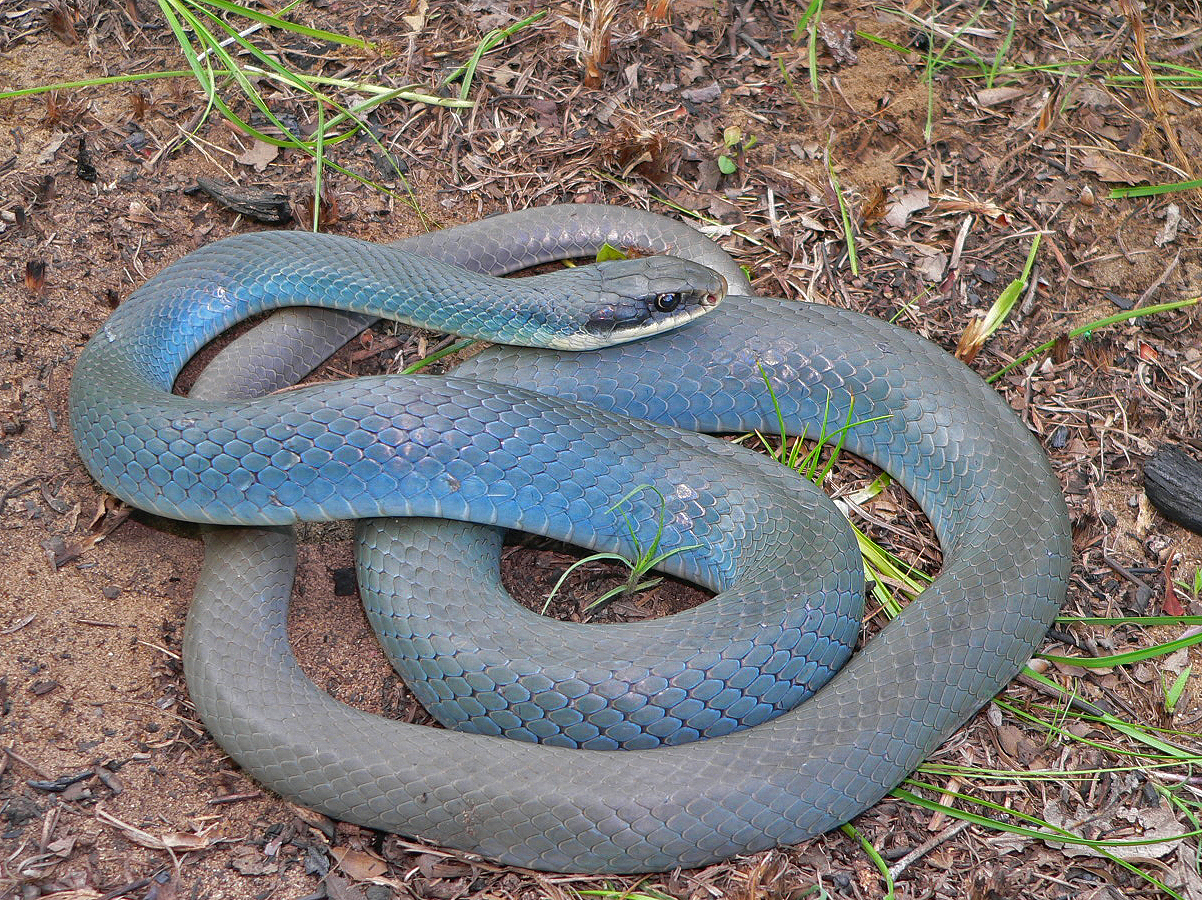
Despite its scientific name, the Blue Racer does not constrict its prey.
The Blue Racer is an active forager, eating insects, rodents, frogs, birds and other snakes. 
The Blue Racer is non-venomous, as are most of Ontario’s snakes, except for the rare Massasauga rattlesnake, which would rather flee or hide than bite!.Report any illegal activity related to plants and wildlife to footnote.You can help improve Blue Racer habitat by planting or leaving long grassy areas on your property (especially adjacent to woodlands or meadows) and planting hedgerows, which provide hiding places.Never buy snakes that have been caught in the wild and never buy a native species of any kind that’s being sold as a pet.

Although species at risk are protected, poachers have been known to capture individuals for the pet or food trade.Be respectful and observe from a distance. Also, certain species are protected under legislation, which makes it illegal to harass, harm or kill them. Snakes can be delicate and improper handling can cause serious injury. If you come across a snake, please don’t try to capture it, handle it or kill it.Whether in a field or in your backyard, if you come across a snake, keep in mind that you are much larger than it is and the snake is more afraid of you than you are of it. Try to develop an appreciation for snakes they play an important role in our environment.If you find Blue racer on your land, you may be eligible for stewardship programs that support the protection and recovery of species at risk and their habitats. Private land owners have a very important role to play in species recovery.Volunteer with your local nature club or provincial park to participate in surveys or stewardship work focused on species at risk.

Photographs with specific locations or mapping coordinates are always helpful.
Report a sighting of an endangered animal or plant to the Natural Heritage Information Centre. General Habitat Protection - JWhat you can do Report a sighting Read the report on progress towards the protection and recovery of 12 species at risk, including Blue Racer (2022). Read the government response statement (February 28, 2019) Review of progressĪ review of progress made toward protecting and recovering a species is required no later than the time specified in the species’ government response statement, or not later than five years after the government response statement is published if no time is specified. Read the recovery strategy (March 2, 2015) Government response statementĪ government response statement outlines the actions the government intends to take or support to help recover the species. Read the executive summary (March 2, 2015) Recovery strategyĪ recovery strategy advises the ministry on ways to ensure healthy numbers of the species return to Ontario. Action we are takingĮndangered Species and their general habitat are automatically protected. The most significant threats to the Blue Racer are habitat loss or degradation, loss of overwintering sites, human persecution, and road mortality.Īlthough Blue Racers can be found in old farm fields, they are relatively intolerant of human disturbance. View a larger version of this map ( PDF) What threatens it Ontario’s Blue Racers range over a wide area - the average is 111 hectares for females and 201 hectares for males. The population appears to have declined since 1995, when there were about 205 adult Blue Racers on Pelee Island. In Ontario, the Blue Racer is currently found only on Pelee Island in western Lake Erie. In winter, the Blue Racer hibernates below the frost line in rock crevices. It also lives in pastures and abandoned farm fields where it can find a plentiful bounty of rodents, its primary food source.įemales lay their eggs in rotting logs or compost piles that serve as incubators until the eggs hatch. The Blue Racer prefers open habitat with abundant cover such as prairie, savanna, alvar and open woodlands. The belly is usually a lighter blue-green or whitish hue. It is named for its speed and distinctive grayish-blue or blue-green body colour. The Blue Racer is a large, non-venomous snake that grows to 1.5 meters in length. The Blue racer was already assessed as endangered when the Endangered Species Act took effect in 2008. Date added to the Species at Risk in Ontario List 
“Endangered” means the species lives in the wild in Ontario but is facing imminent extinction or extirpation. Cover photo credit: Michael Oldham Status Endangered








 0 kommentar(er)
0 kommentar(er)
